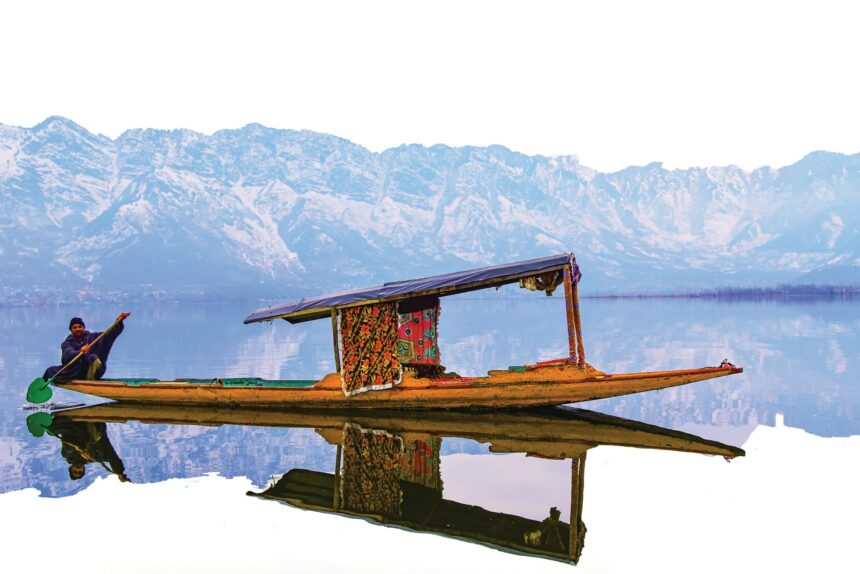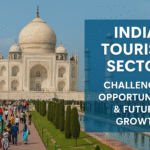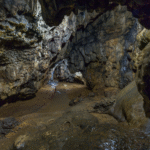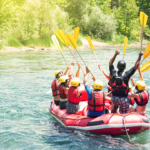The Great Kashmir Lakes Trek equates with what you have imagined beautifully in your mind and takes you to the best Indian Himalayan Trail in 6 days. Beginning with a lush green trail, it helps you dive in different aspects of the trek where it has the full potential to make you speechless with its jaw-dropping sceneries.
Some of them are stunning blue lakes that The Great Kashmir Lakes Trek becomes gorgeous and boasts of, and further, with its purely rough trekking trail that is moderate to difficult, it compels you to be in the middle of an alluring high pass. This becomes possible because the trekking trail switches from moderate to difficult and back to moderate.

What you see from the top is the real beauty of Kashmir that resonates with your feelings.
Above all, the non-stop view of the snow-covered mountains makes you praise God’s creations. Because of these, your mind is excessively influenced and is overshadowed by your own positive comments towards nature and is willing to forget almost how much difficulty the trek has been in the beginning, in the middle and in the end.

The trekking trail of The Great Kashmir Lakes Trek is challenging and has a high ascending, followed by a steep descending and gives you some kind of relief before preparing for the second and the third pass. It is true that walking uphill is as difficult as walking downhill because in uphill, you are breathless but more balanced, compared to downhill where you are prone to become imbalanced. Whether you are downhill or uphill, you love walking, especially in such a naturally beautifully blessed place. Hence, we would like to introduce you to your itinerary that tells you how far you would be going in terms of walking and climbing during the 5 days camping and the 6 days walking.
Day 1: Sonamarg (2730 m) to Nichnai (3500 m)
· Distance: Approximately 10-11 km
· Duration: 6 hours
· Difficulty: Moderate
Day 2: Nichnai Pass (3505 m) to Vishansar Lake (3658 m) (via Nichnai pass)
- Distance: 12 KM
- Duration: 6 hours
- Difficulty: Difficult to Moderate
Day 3: Vishansar Lake to Gadsar Lake (3810 m) (via Gadsar Pass)
- Distance: Approximately 10-14 km.
- Duration: 6 to 10 hours
- Difficulty: Moderate to difficult
Day 4: Gadsar Lake (3810 m) to Satsar Lake (3658 m)
- Distance: Approximately 10–12 km.
- Duration: 6 hours.
- Difficulty: Moderate to difficult
Day 5: Satsar (3658 m) to Gangabal Lake (3505 m) (via Zaj Pass 4080 m)
- Distance: 11-13 km
- Duration: 6-7 hours
- Difficulty: Moderate to difficult
Day 6: Gangabal Lake (3505 m) to Naranag (2271 m)
- Distance: Approximately 13-15 km
- Time: 6-7 hours
- Difficulty: Moderate to difficult
The Highlights of the trek are
- Green meadows
- Distant valleys and rivers
- Five Blue lakes
- Snow-covered mountains
- Glaciers on hills
- Alpine Forest
- High Mountain Passes
2. Best Time to Do the Trek

Take a leave from your office in any of these months: July, August, and September to enjoy the natural beauties of The Great Kashmir Lakes Trek although you know these months fall under the monsoon season of India. But Kashmir will not be affected by it because it lies in the “Rain Shadow Area of India”, creating a favorable situation for trekking. But what about snow in such a high altitude that is always covered by it. You know some of these months also fall in the list of summer seasons of India. So the sun is bright and the snow are melting, and the trekking trail opens for the trekkers. As a result, you could enjoy all the beauties of The Great Kashmir Lakes Trek as you head to the meadows, lakes, hills, valleys and not only this, you will also see glaciers and the patches of snow.
3. Trek Difficulty and Fitness Level
The trekking trail of The Great Kashmir Lakes Trek features vehicle route, moderate trekking trail, forest and meadows trail, gradual ascent, steep descent, rocky trail, level walk, and flatter walk, giving you all kinds of walking experience from easy to difficult in the Himalayan Region. As you walk the ascending trekking trail, you will reach the highest point called the Zaj Pass, (4080 m). Compared to the Annapurna Base Camp Trek (4130 m), you will find The Great Kashmir Lakes Trek easy because you can easily ascend the height of 4080.
4. Permits and Permissions
Any ID card that is official will act as a means to get the permit for The Great Kashmir Lakes Trek and could be a driving license or an Adhar Card. If you don’t have any of these, then you can show your passport. Along with these IDs (one of them), you also need to represent the medical certificate to get the permit as well as you must have 4 passport sized photos. Permit is required to be shown in a police station and can be gotten from the police station after one day after the submission of ID card along with form. Permit can also be gotten from a trekking agency, but you have to apply for it prior to one month.
5. Camping and Accommodation
Camping is located by the lake and shows you the spectacular view of Mount Harmukh (5142 m). The view of the lake itself is dramatic, and now you will value the experience of seeing. After walking the flatten trekking trail, what could be better for you than relaxing in a campsite, seeing a beautiful lake. The fifth day, the last day of camping offers you the spectacular view of mountains, lake and the surrounding areas.
Campsite offers you accommodation in a twin-sharing tent for 5 days.
It is also the campsite that levels up The Great Kashmir Lakes Trek and offers you the immersion, in the beauties of the blue lakes, in the floating of beautiful glaciers, and at the sight of the snow-covered mountains. It further goes to state that you will spend the night under the starry sky.
6. What to Pack and Wear

Since you are trekking in the Himalayan Region, you need to bring warm clothes as well as electronic goods while staying in a tent.
- Thermals, fleece, waterproof jacket and pants
- Sturdy high-ankle trekking shoes
- Towels
- Warm socks
- Gloves
- Eye glass
- A 50-60-liter backpack
- Trekking poles
- A headlamp
- A personal first-aid kit
- Sunscreen
- Hat
- Toiletries
- A water bottle
- Important Documents
- Powerbank
- Camera
- Torch light
Also don’t miss out our ultimate travel checklist if you are thinking of any type of Kashmir trip.
7. Safety, Connectivity, and Responsible Trekking
Altitude Mountain Sickness begins at the altitude of 3000 m plus. Since you will be at 4000 m plus, you are likely to be hit by AMS. Here are the symptoms: headache, lightheadedness, and nausea. One of the ways to overcome them is to drink water.
What is the most important thing after AMS? It could be a mobile network which will become unreliable as you head to a higher altitude. It is better to text and call your family or before starting your trek, give the full information of your itinerary. They will know every day where you are.
If communication is important, then it is also important to keep the environment clean by carrying out all wastes like food scraps, tissues, plastic bags, and cigarette butts.
8. How to Reach and Plan the Trek
If you are planning to do The Great Kashmir Lakes Trek, then you have to book it with a registered trekking company. But first, you must fly to Srinagar and drive to Sonamarg (2730 m) to start The Great Kashmir Lakes Trek. The company that you have hired can also provide you transportation from Srinagar to Sonamarg if you tell about this service at the time of booking to your coordinator. What the company provides you are guide, porters, cook, cooking utensils, tents, communication device, first aid box, and meal. You have to handle all the road transportation by yourself, but before hiring the trekking company, you must know whether the company
- is registered or not
- is local or not
- has government license
- has licensed experienced trekking guide
- is safety concern
- practices responsible tourism
- shows clients’ reviews
The trekking trail of The Great Kashmir Lakes Trek takes you far off from the busy life of the city in order to renew the physiological aspects of your body, freshening you as well as developing you to adopt a new approach towards your wonderful life.








